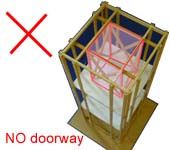|
Your model only needs to include the main
structural frame of a building. You do not need to add
the walls on the outside of the building or stairs within.
Your model can be any shape you like, but it must follow these
rules. (
Why ?)
- It must have at least 4 horizontal
floors that are represented by flat pieces of paper
supported any way you like. A flat roof will be treated
as a floor.
( Show Me )
- Not counting the ground floor, the
total area of all of the other floors must be at least 750
sq cm. The maximum area
allowed for each floor is 320 sq cm. The floor area
includes the space taken by the columns.
- The distance between the top
of any floor and the bottom of the floor above must be at
least 15 cm.
( Show Me ) The fixings required for the steel
blocks in the Rules for Vertical
Load do not count as part of the floors.
Remember! You MUST include
fixings for the steel blocks on your model to qualify
for the
final competition. |
- You must leave 12 mm clear around
the edges of the MDF base board, so that we can fix
your model to the shaking-table with clamps (
Show Me ). However you may tie string to the corners
of the base board only.
- In a real building, you would
need windows in every storey.
So for each storey of your model, half of the outside
surface must be left completely clear of any materials between
the top of one floor and the bottom of the floor above.
(
Examples )
-
In a real building, people need access to all rooms on
each floor. Allow for this in your model by making sure
that access is not blocked by partitions
( Show Me ), crosspieces (Show
Me) or other parts of the structure. So, leave enough
space for at least one doorway 10 cm high and 4 cm wide
into any rooms that you create.
- If your model has been designed to slide or move around
on the MDF base, its movement must be limited so that the
bottom of the model moves within a 22.5 cm square.
|
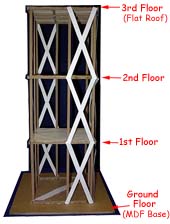
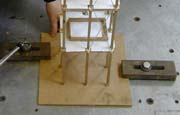
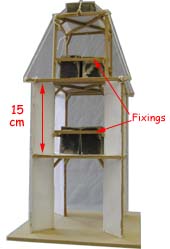
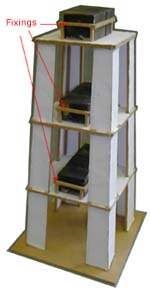
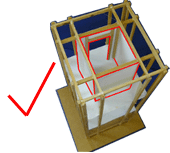 with paper floor removed
with paper floor removed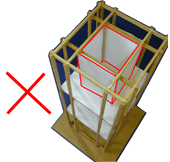
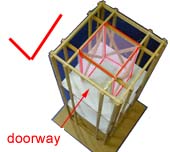 with paper floor removed
with paper floor removed